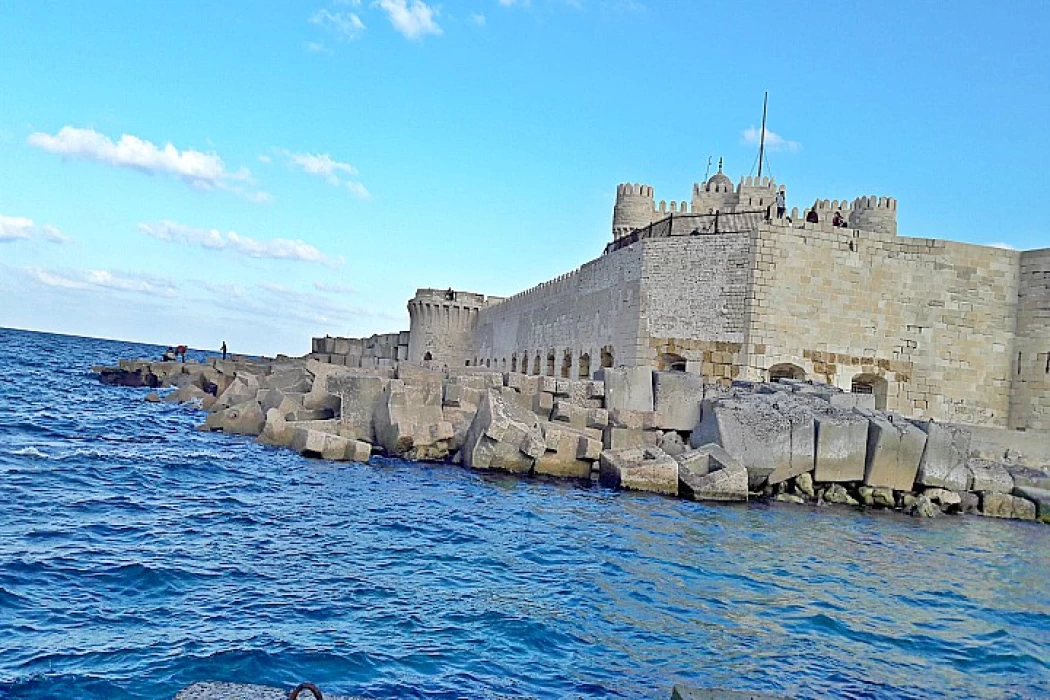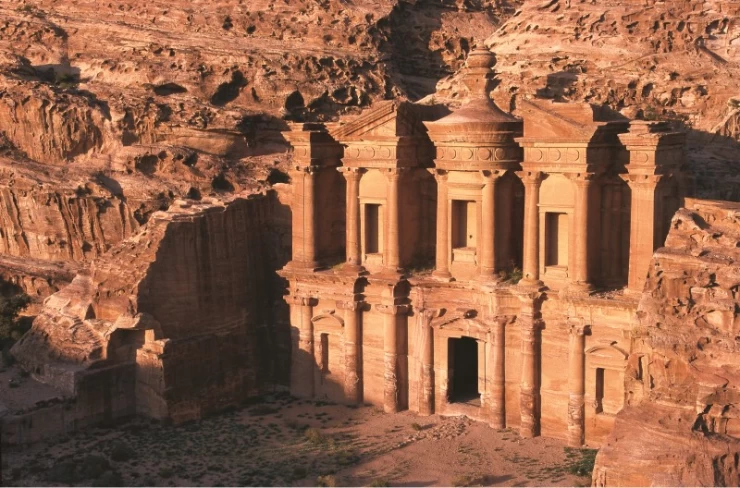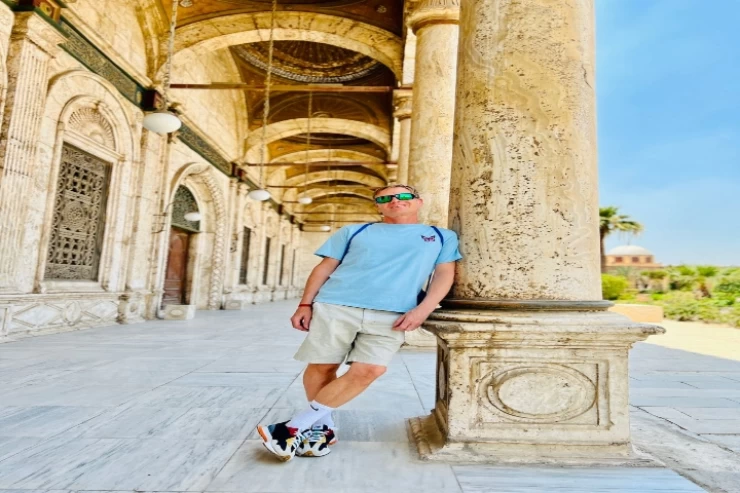
Egypt During Easter Holidays
Easter in Egypt: A Journey Through Faith and Heritage
Though Egypt is primarily connected to its ancient pyramids and mosques, a strong Christian tradition exists across the country and is never more evident than at Easter. For the main group among Egypt’s Christians, Easter is a celebration of their faith and an opportunity for coming together with others.
The Coptic Orthodox Church and the Significance of Easter
The biggest Christian community in the Middle East can be found in Egypt. It is St. Mark the Evangelist, who came to Egypt in the 1st century AD, who is responsible for the founding of the Coptic Orthodox Church of Alexandria, and it is this that is the main Christian community in the country. The term "Coptic" was taken from the ancient Greek word "Aigyptios," meaning "Egyptian." The Copts are therefore Egypt's oldest Christian people, having kept customs from several centuries.
For the Copts, Easter celebrates the fact that Jesus was resurrected and represents the triumph of living over death, happiness over misery, and freedom for all.
Coptic Easter stands apart from Western Easter because its traditions, way of fasting, and religious background are unique to Coptic heritage.
Since Coptic and Western Easter are not calculated the same, Coptic Easter is often celebrated after Western Easter. Unlike Western churches, the Coptic Church bases its calendar on the Julian calendar.
The Holy Week: A Time of Reflection
Easter’s spiritual journey starts during Lent, and Holy Week marks the end of those 55 days. During Lent, people avoid eating meat, dairy, and anything from an animal. Many Copts find Ramadan to be a time for increased praying, helping others, and purifying their spirits.
Holy Week is celebrated during the most important time in this journey. Palm Sunday marks the occasion by remembering Jesus’ arrival in Jerusalem. Those attending celebrate with palm branches as symbols of calmness and success, and each church is decorated with unique palm weavings.
All the days in Holy Week have passages and prayers focused on the conclusion of Christ’s life. The mood becomes more sombre as the days go by. On Good Friday, which is a sad day in the Christian calendar, churches hold a ceremony where members reflect on the crucifixion. The sad melodies, dull light from candles, and incense fill the air with a strong sense of spirituality.
Apocalypse Night, or Easter Eve, is the moment when the church shines with light. At the beginning of this service, it is late, and it all takes place during the early hours of Sunday morning. With the tolling of the bells, singing of resurrection songs, and sharing of holy light, the sombre mood transforms into a happy state.
Coptic Cairo: A Living Museum of Faith
Coptic Cairo, or Old Cairo, is the most fitting place to celebrate Coptic Easter. The district contains many examples of early Christian history, such as ancient churches, monasteries, and artifacts.
The Hanging Church
The Hanging Church, or Al-Muallaqa, is among Coptic Cairo's most famous attractions. Constructed over the gate entrance to the Babylon Fortress in the 3rd century, the church is a special favorite in the center of Coptic Christianity. The church is especially decorated during Easter, and residents and tourists alike converge on Easter Eve.
The Church of St. Sergius and Bacchus.
This is a significant site because it is reported to be where the Holy Family fled to in Egypt. On this visit, the church crypt is given additional importance by pilgrims, since they pay homage to the early years of Jesus in Egypt.
The Coptic Museum
Within Coptic Cairo, you will find the Coptic Museum, which is filled with Christian art, manuscripts, and old relics. Easter is a time when visitors can explore and discover the origins of Christianity in Egypt.
Modern-Day Celebrations and Traditions
Following the religious celebration of Holy Week and Easter Mass, families get together to enjoy a special meal on the holiday. When people are observing Lent, they eat more fasting foods, but Easter is defined by returning to favorite dishes such as roasted meats, fatta, and eggs that are dyed for the holiday.
The festival of Sham El-Nessim, a spring festival for ancient Egypt, takes place on the day after Easter Sunday. Many Egyptians, no matter their faith, take part in celebrations such as going to gardens or Nile picnics and eating feseekh, onions and lettuce. Even without religion today, the immediate position of Ramadan after Easter comes from the mix of Pharaonic, Christian and Muslim traditions found in Egypt’s history.
Challenges and Hope
While Easter in Egypt is celebrated with much joy and anticipation, the Coptic community has still faced many problems. Recently, there have been cases of violence and discrimination between sects. It is still viewed as a manifestation of strength and faith for Egyptian Christians. It highlights their faithful work and proves that they play an important role in Egypt’s history and religion.
Authorities in Egypt have made efforts to support all faiths by building new churches, for example, the Cathedral of the Nativity of Christ in the New Administrative Capital. Attending Coptic Easter services is often understood as a sign of togetherness in the nation.
Pilgrimage and Tourism
Easter is a wonderful occasion for strangers to see and experience Egypt’s Christian culture. Visiting Coptic Cairo on a tour, exploring monasteries in the deserts, and being part of Easter services add a unique touch to your travels.
Two of the oldest Christian centers in the world are found in the Red Sea Mountains: St. Anthony’s Monastery and St. Paul’s Monastery. During the Easter period, many people traveling to these monasteries observe a way of living that has remained the same for centuries.
The celebration of Easter, in the Christian liturgical calendar, begins with a special period. Lent is a season of preparation before the Easter celebrations. By observing the 40 days of Lent, Christians replicate Jesus Christ's sacrifice and withdrawal into the desert for 40 days. Lent is marked by fasting, both from food and festivities. It begins on Ash Wednesday, is the day following the Shrove Tuesday of Carnival, and ends with the Easter triduum, a period of three days' observance, specifically Maundy Thursday, Good Friday, and Holy Saturday. The duration recalls the 40 days spent by Jesus in the desert following his baptism in the Jordan River.
Celebrations of the "Glorious Resurrection Day", which is the largest holiday in Christianity, declare the victory of life over death, as Copts rejoice in the resurrection of Christ, and begin with the holiday mass, where cheerful hymns are chanted and bells ring, amid an atmosphere of joy.
The celebration of Easter, in the Christian liturgical calendar, begins with a special period. Lent is a season of preparation before the Easter celebrations. By observing the 40 days of Lent, Christians replicate Jesus Christ's sacrifice and withdrawal into the desert for 40 days. Lent is marked by fasting, both from food and festivities. It begins on Ash Wednesday, is the day following the Shrove Tuesday of Carnival, and ends with the Easter triduum, a period of three days' observance, specifically Maundy Thursday, Good Friday, and Holy Saturday. The duration recalls the 40 days spent by Jesus in the desert following his baptism in the Jordan River.
The last week of approaching Easter is called Holy Week and begins on the Sunday preceding the holiday. Palm Sunday, reminiscent of Jesus' entry into Jerusalem, was welcomed by the crowd stirring branches of palm trees. In that same week, there is Holy Thursday, which begins the celebrations of the Easter triduum. The latter is composed of the three days that precede Easter and retrace the passion and resurrection of Jesus Christ.
Egypt boasts an interesting historical heritage, very rich and varied as well as an enviable climate, the combination of these factors makes this country the ideal destination for the holiday Easter tours, an excellent time to enjoy the beauty of the country in a sweet climate and temperate. Egypt also knows this holiday, which is celebrated religiously by Coptic Christians, but the ancient Egyptians hosted an occasion dedicated to spring almost concurrently, it is called Sham el-Nessim, and it would seem to find the roots of the current Christian Easter.
The great Pharaonic civilisation is the origin of Sham El Nessim, one of the earliest Egyptian celebrations. It was celebrated at the start of spring by the ancient Egyptians. Although it is a holiday with a purely Egyptian character, it is closely associated with the Christian Easter.
Already, the ancient Egyptians offered salted fish, lettuce, and onions to their deities during the spring festival known as Shemu. After the Christianization of Egypt, the feast was associated with Easter, because it also happened in the spring. With the Islamic conquest of Egypt, the party was established on Easter Monday. Being the lunar Islamic calendar and therefore not fixed with respect to the solar year, the date of Sham el-Nessim remained that linked to Christianity. The term Shemu was later adapted to Arabic as Sham el-Nessim or (Smelling the breeze).
Thanks to Egypt's nice weather during the Easter holidays in Egypt, we have also discovered what the taste of tours in Egypt is and how to organize a trip to Egypt and take an Egypt tour to visit most of the classic sites such as the Giza pyramids and the Great Sphinx, Khan El Khalili bazaar and many other archaeological sites to visit adding that you can try Nile cruise tours in Egypt admiring the natural beauty and Egyptian history of our great pharaohs who wrote a very respectful history and civilization.
You can visit the monasteries, as Egypt is full of monasteries in Upper Egypt and in Wadi El Natrun, in addition to those in Saint Catherine. You can take the opportunity on this holiday to visit the monasteries and churches.
You can also have a very unique experience in Egypt during Easter by trying the Siwa Oasis tour from Cairo which is one of the unusual tours from Cairo which can be arranged easily by Cairo Top Tours.
It is dedicated in Egypt and the world to celebrate the glorious Easter, which comes after the period of holy spiritual fasting, as the spiritual fasting contracts begin for Holy Week, which is the last week of Lent, which is the holiest days of the Christian year.
Celebrations were associated with the serving of dried and salted fish, such as feseekh. Egyptians preferred to stroll through the gardens and eat salted fish.
In modern times, Sham El-Nessim has become a national holiday celebrated by all Egyptians, regardless of religious distinction. This underscores the cohesion and solidarity of Egyptian society and its respect for inherited customs and traditions.
There are inherited Sham El-Nessim rituals:
Egyptians bring colored eggs with them in the gardens, in addition to onions and lettuce.
















